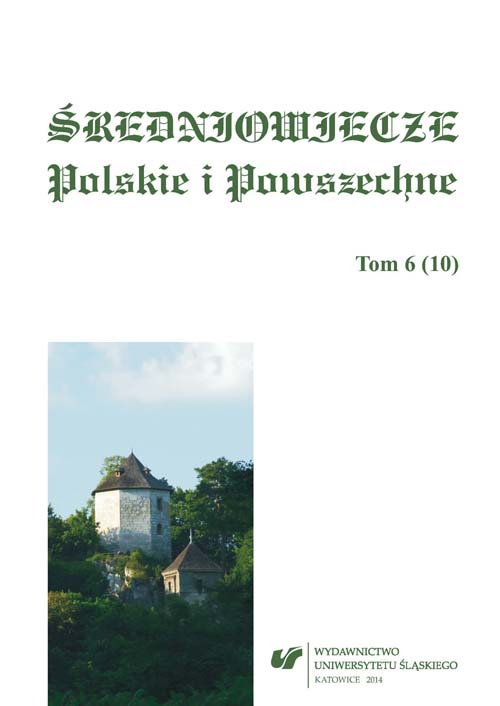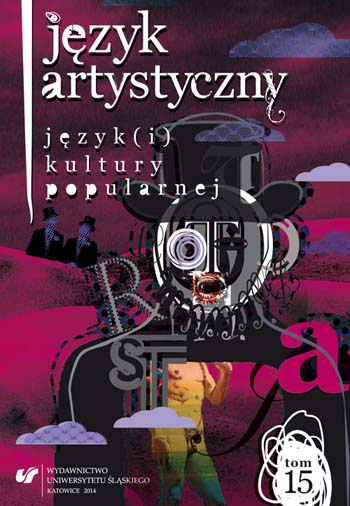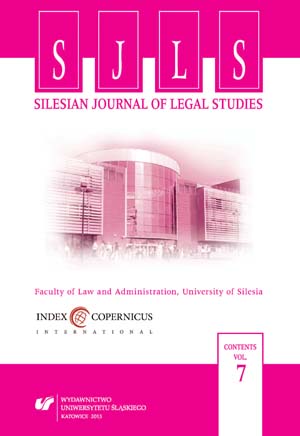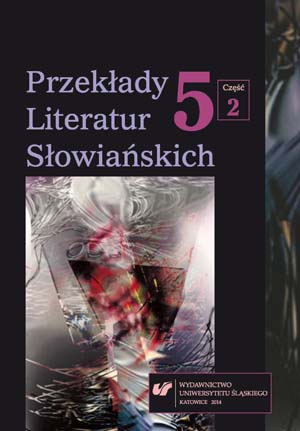


„Linguarum Silva” – rocznik naukowy ukazujący się od 2012 roku pod patronatem Instytutu Języka Polskiego Uniwersytetu Śląskiego w Katowicach. Publikowane są w nim artykuły z zakresu szeroko pojętej lingwistyki (m.in. prace semantyczne – diachroniczne i synchroniczne, genologiczne, stylistyczne). Autorami tekstów są młodzi naukowcy – doktorzy i doktoranci – kierunków humanistycznych (zwłaszcza językoznawczych) z katowickiej uczelni oraz z innych ośrodków naukowych w Polsce. W „Linguarum Silva” zamieszczane są także recenzje i omówienia książek, przede wszystkim językoznawczych nowości wydawniczych, oraz sprawozdania z ważnych konferencji, uroczystości i wydarzeń związanych z działalnością Instytutu Języka Polskiego UŚ.
Dotychczas ukazały się dwa tomy „Linguarum Silva” zatytułowane Opozycja – przeciwieństwo – kontrast w języku i w tekście (2012) oraz Słowo – znaczenie – relacja w języku i w tekście (2013). W przygotowaniu jest tom Zmienność – stałość – różnorodność w dawnej i współczesnej polszczyźnie.
More...
The journal Problemy Prawa Karnego (Problems of Criminal Law) is published by the University of Silesia Press since 1977.
More...
„Folia Philosophica” is a periodical presenting results of the philosophical research on the fundamental philosophical questions. The volumes include texts from all fields of philosophy and articles of the Polish authors as well as translations of philosophical texts. „Folia Philosophica” has been founded in 1984.
More...
Logopedia Silesiana (LS) is going to be one of the focusing on the issues connected with practical and theoretical aspects of speech therapy activities with people suffering from speech and language disorders. According to the aims of LS, this is expected to be a scientific forum which will support both speech therapy development as a scientific area and speech therapy/logopedic culture.
This publication enables those who are interested in speech therapy as science on biological conditions of language and linguistic aspects to present their achievements and conclusions. What is more, LS is also a description of relations between speech, thinking and reality expressed by a language.
The LS articles describe an interdisciplinary character of speech therapy activities and the discussions comprising the outline of speech development and speech disorder conducted in medical, linguistic, psychological and pedagogical perspective.
First two volumes focus on the national and foreign 21st-century therapists of speech and language as well as their achievements and observations.
We hope that a sepctrum of theoretical-causastic discussions included in LS will both facilitate the therapist` s abilities and support the development of scientific research on human being`s congnitive and interactive abilities.
LS contents is designed to make everyone be interested in theoretical investigation of the issues focusing on speech therapy theories and it should enable the implementation of more efficient and practical solutions in the area of supporting people with various disorders of communication abilities.
More...
ilesian Journal of Polish Studies is a periodical on the history and criticism of Polish literature published at the University of Silesia. This academic journal of the Silesian Polish Philology Faculty was started in 2010 by scholars working in the Institute of Polish Literature.
The main part of each issue of Śląskie Studia Polonistyczne consists of scholarly articles devoted to a particular subject. This section is entitled Treatises and Articles and contains studies discussing a previously chosen and defined research question, literary phenomenon or the creativity of a certain author. The analyses are based on new research perspective. They apply new modes of description and can be devoted to each element of literary universum . Among the topics that have been analyzed so far the following examples can be mentioned: Alternative Life of History (in Literature); Słowacki after 200 Years; Psychoanalysis - Politics - Social Change.
Another important section of the journal is entitled Presentations. Here short interviews with contemporary Polish writers or discourses on creative writing are presented. In addition there are two or three critical reviews commenting on the creativity of the invited writer.
Each issue also contains a Review and Surveys section, which offers the reviews of the latest academic and essayistic publications in the field of literary criticism.
Integral sections of the journal are two thematic modules devoted to some historical phenomena and events that are considered important and influential for Polish Philology. These sections are entitled: Archives and Chronicle.

The yearbook Z Problematyki Prawa Pracy i Polityki Socjalnej (Problems of Labour Law and Social Politics) is published by the University of Silesia Press since 1977.
More...
„Średniowiecze Polskie i Powszechne" jest czasopismem naukowym, redagowanym przez pracowników Zakładu Historii Średniowiecza Instytutu Historii Uniwersytetu Śląskiego. Pierwszy tom, jeszcze pod tytułem Średniowiecze polskie i powszechne, ukazał się w 1999 roku. Jego redaktorem był obecny i ówczesny kierownik tegoż Zakładu – prof. dr hab. Idzi Panic. Od tomu drugiego redaktorem „Średniowiecza" był także prof. UŚ dr hab. Jerzy Sperka. Kolejny tom ukazał się dopiero w 2002 roku, dalsze w 2004 i 2007 roku, a od tego roku „Średniowiecze", w niezmienionym składzie redakcyjnym, ukazywało się już co rok. W związku z tym, że „Średniowiecze" zyskało status wydawnictwa ciągłego, zgodnie z wymogami Narodowego Ośrodka ISSN, mieszczącego się w Bibliotece Narodowej w Warszawie, zmieniono nieznacznie zapis tytułu (zastosowano wielkie litery oraz cudzysłów) i wprowadzono nową numerację tomów. I tak, pierwsza po tytule cyfra oznacza tom nowego wydawnictwa ciągłego, natomiast w nawiasie podany jest numer liczony od początku wydawnictwa „Średniowiecza", kiedy było jeszcze wydawnictwem wielotomowym. Czasopismo znalazło się na liście czasopism naukowych parametryzowanych przez Ministerstwo Nauki i Szkolnictwa Wyższego. Rozszerzyła się też formuła periodyku, oprócz artykułów, publikowane są w nim recenzje.
Na łamach czasopisma ogłaszane są teksty naukowe poświęcone średniowieczu polskiemu i powszechnemu. Ich odbiorcą jest szeroki krąg zainteresowanych, zwłaszcza historyków mediewistów i studentów. Wśród autorów znajdują się pracownicy Instytutu Historii Uniwersytetu Śląskiego w Katowicach oraz historycy z innych ośrodków naukowych w kraju, a także z zagranicy. Artykuły publikowane są głównie w jęzuku polskim, ale także w angielskim, czeskim, rosyjskim i ukraińskim.
More...
The yearbook "Wieki Stare i Nowe" (The Old and the New Ages) was first published in 2000 as a periodical of the University of Silesia Institute of History. In 2005 (since Vol. 4) journal was officially rated by the Ministry of Science and Higher Education. Due to the fact that since Vol. 6 (2009) the numbering of the yearbook had been changed, the sixth volume was issued as Vol. 1 (6).
In "Wieki Stare i Nowe" (The Old and the New Ages) there are published articles (since Vol. 2 (7) also source materials and reviews) concerning general history and the history of Poland from ancient times to the contemporary historic events. The periodical is intended for a wide circle of readers, primarily for the scholarly-didactic workers, doctoral students and undergraduates in history. The historians publishing in it represent various academic centers, both local and foreign.
More...
Pomieszczone w niniejszym wydawnictwie teksty stanowią różne głosy w dyskusji nad miejscem i rolą kultury popularnej w dzisiejszym świecie. Sięgnięto do zróżnicowanych gatunkowo tekstów, sformułowano rozmaite tezy, a wszystko po to, by opisać jeden z fenomenów współczesności. Napotkamy w analizach zarówno utwory poetyckie i prozatorskie reprezentujące dyskurs artystyczny, szeroko pojęte wypowiedzi medialne, jak i teksty będące przedstawicielami podróżopisarstwa. Opracowania składające się na niniejszy tom dotykają m.in.: problematyki polifoniczności kulturowej współczesnej poezji, zagadnienia tożsamości wampirów, kreacji wizerunku mężczyzny w literaturze gejowskiej, elitarnego egalitaryzmu Kabaretu Starszych Panów, metarefleksji nad literaturą wyróżnioną Nagrodą Literacką Nike, stylu podróżopisarstwa Mariusza Wilka, językowej kreacji zapachu w tekstach medialnych czy wreszcie onomastycznoliterackiej analizy prozy Ignacego Karpowicza.
More...
The volumes of "Z Dziejów Prawa" are published by the University of Silesia Press and are devoted to the history of law.
More...
The volumes of Rusycystyczne Studia Literaturoznawcze are published by the University of Silesia Press and are devoted to the studies on Russian literature.
More...

The Journal has been founded in 2009 by the Council of the Faculty of Law and Administration of the University of Silesia in Katowice as a reviewed periodical. Its aim is to overcome frontiers and obstacles in spreading ideas, opinions and information on law and legal systems. The SJLS aspires to be a discussion forum for Polish and foreign lawyers representing various branches of law. For the above reasons, the Council of the Faculty has decided that articles may be published in four languages, namely: English, German, French and Spanish. However, publication in other languages is not excluded.
More...
The periodical "Zarządzanie i Technologie Informacyjne" (Management and Information Technologies) is published by the Silesian University Press. The journal has been established in 2004.
More...
Przekłady Literatur Słowiańskich - "Translations of Slavic Literatures" - is a series of publications main issue is artistic (literary) translation perceived from a theory, history of literature and history of culture viewpoints. The project comprises both; registration of numerous translations editions and their reception; as well as more specific problems, concerning: 1) uniqueness of artistic translation between closely related languages; 2) intercultural translation and 3) the role of translation in comparative studies. As a consequence of undertaking two-route researches; following socio-documentational approach and critical - interpretational approach, each volume is going to be published in two independent parts, closely interconnected by the publication time of particular translations. The first part of every volume consists of articles focused on particular translatiological issue, while the second contains bibliography of translations. Presented volume is addressed to literary and translation scholars; critics and students, particularly - scholars of Slavic comparative studies.
More...
“Studia Politicae Universitatis Silesiensis” – as a multi-volume publication created out of the initiative of the employees of the Institute of Political Sciences and Journalism at the University of Silesia – has been published by the publishing house of this university since 2005 when the Institute celebrated the 30th jubilee of its creation. In view of the issues raised, the texts published in particular volumes are grouped in thematic parts: A political thought, social communication, international relations and European integration, as well as Reviews and discussions. The very publishing cycle is characterised by an extensive research profile and its volumes present the issues within the scope of a widely understood political problems reflecting the status quo of the research conducted within the area of particular sub-disciplines of the science on politics. The main aim of the intention “Studia Politicae Universitatis Silesiensis” constitutes is to present an individual and team academic output of its employees and PhD candidates of the Silesian Alma Mater, as well as the output and comments in a discussion of political scientists Poland-wide and abroad. Volumes focused on one subject devoted to selected issues of contemporary regional, state and international politics are intended to be published under the same title.
More...
"Humanistic Scripts" is a scientific journal published since 1999. The scope of interest of journal are considerations in the humanities and social, especially in areas such as philosophy, history, political science, sociology and related sciences. A wide range of topics of research, the results of which are presented in the magazine, is intended to provoke a confrontation between intellectual disciplines. The idea of "Humanistic Scripts" derives from the philosophy of meeting of Ferdinand Ebner, putting the focus of the relationship between the various approaches, exposing the differences and points of convergence. The most important tasks that are set by the Editorial Board is discussing in upcoming issues on current and important issues, ensuring the highest quality of substantive articles (reviewed in double-blind form) and professional service of publishing cycle.
More...
ER(R)GO jest ogólnopolskim periodykiem naukowym nawiązującym do kilkunastoletniej działalności interdyscyplinarnej grupy seminaryjnej o tej samej nazwie. Profil merytoryczny Periodyk poświęcony jest przede wszystkim refleksji nad wytworami kultury współczesnej - także kultury popularnej - ze szczególnym naciskiem na zagadnienia teoretyczne i w najszerszym sensie z teorią związane. Tematyka obejmuje analizę zjawisk, dzieł, procesów kulturowych i literackich oraz ich uwarunkowań, analizę kontekstów je określających, zagadnienia metodologii badań literaturoznawczych i kulturoznawczych, analizę współczesnych tendencji w kulturze i ich założeń myślowych, zmiany paradygmatów teoretycznych i metodologicznych, analizę etycznych i aksjologicznych uwikłań prądów oraz zjawisk kulturowych i literackich, syntezy teoretycznoliterackie i kulturoznawcze, związki literatury z filozofią i innymi naukami. Istotny nacisk kładzie się na zagadnienia teoretycznoliterackie, przy czym literatura postrzegana jest w jej powiązaniach z kontekstami i procesami ogólnokulturowymi. Zadaniem pisma jest wypełnienie niszy między periodykami literaturoznawczymi i kulturoznawczymi oraz umożliwienie spotkania tych dwóch szerokich dziedzin w jednej przestrzeni czytelniczej. Ogólny tenor pisma należy określić jako interdyscyplinarny. Krąg odbiorców Przedstawiciele humanistyki uniwersyteckiej: pracownicy naukowi, doktoranci, studenci, w szczególności zaś specjaliści i czytelnicy przejawiający zainteresowania w zakresie literaturoznawstwa (teoria, komparatystyka, krytyka), nauk o kulturze, socjologii, antropologii, filozofii (szczególnie w zakresie jej pokrewieństw z innymi dziedzinami humanistyki) oraz krąg odbiorców interdyscyplinarnych. Działy Głównymi działami pisma są „Rozprawy - szkice - eseje” poświęcone tematyce określonej wyżej oraz „Przekłady”, mieszczące jeden lub dwa ważne teksty obcojęzyczne w tłumaczeniu polskim. Uzupełnieniem tych centralnych sekcji każdego numeru będą opcjonalne i konstruowane w miarę aktualnych potrzeb działy uzupełniające: „Polemiki - komentarze - uwagi”, zawierające materiał dyskusyjny, oraz „Recenzje - noty - omówienia”.
More...
Idea nowego pisma lingwistycznego o nazwie „Forum Lingwistyczne” zrodziła się Instytucie Języka Polskiego Uniwersytetu Śląskiego. Publikujemy teksty z zakresu szeroko rozumianego językoznawstwa, a zatem nie stawiamy autorom ani ograniczeń tematycznych, ani metodologicznych. Językiem publikacji jest język polski oraz języki kongresowe. Nadesłane teksty zamieszczane są w czterech działach: STUDIA: tu publikujemy artykuły naukowe prezentujące autorskie spojrzenie na problem językowy lub językoznawczy, analizy faktów językowych bądź kulturowych dokonywane z perspektywy lingwistycznej, syntezy dokonań w różnych subdyscyplinach językoznawstwa, itp. POLEMIKI: to miejsce na recenzje najnowszych i dawniejszych, lecz ważkich, prac językoznawczych lub takich, które wpłynęły lub mogą wpłynąć na kierunki badań lingwistycznych. ARCHIWALIA: w tym dziale chcemy przypominać artykuły, które ukazały się kilkanaście, czy może nawet kilkadziesiąt lat temu i które, mimo że ważne i interesujące, zostały nieco zapomniane lub też są trudno dostępne. Aby zwiększyć kręgi czytelnicze, do tego działu przyjmujemy teksty w językach kongresowych (angielski, rosyjski, niemiecki, francuski, hiszpański, włoski). VARIA: tutaj zamieszczamy teksty, które odnoszą się do wszelkich problemów współczesnego językoznawstwa: przypominają ważne postaci i szkoły językoznawcze; rejestrują i komentują wydarzenia życia naukowego, przedstawiają nowe projekty i kierunki dydaktyki uniwersyteckiej, itp.
More...